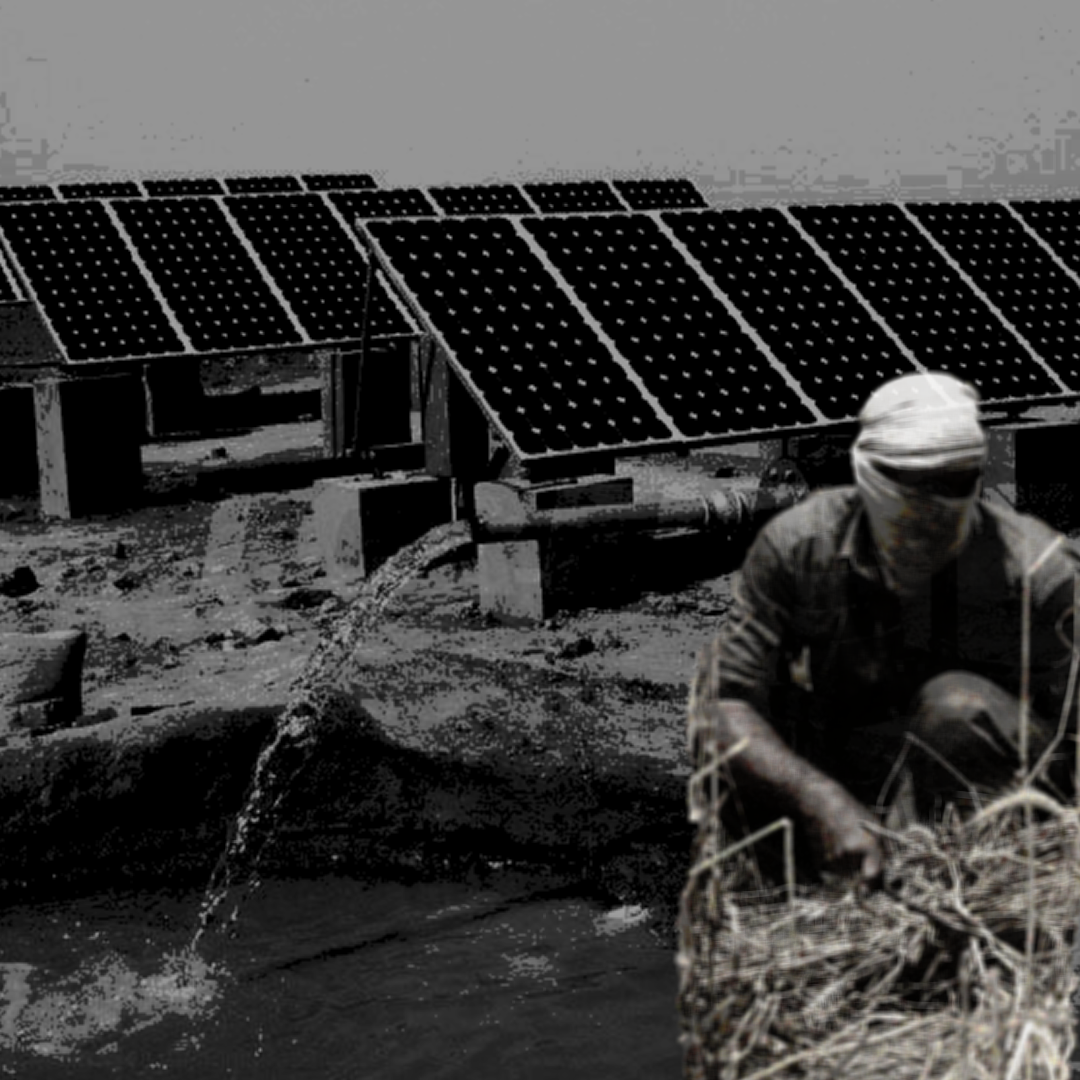The Punjab government has decided to give subsidies to the farmers to shift the electric tube wells to solar energy for their benefit. However, some experts have reservations about the project.
Mian Muhammad Saleem Wattoo, a farmer in Okara, has installed a solar system to irrigate his land. He says he had bought 20 solar panels of 585 watts worth Rs0.8m and he is using a 15hp motor on it. Now he has got rid of electricity and diesel whose prices are increasing day by day. In case of delay in payment of electricity bill, the electricity company’s employees used to come and threatened to file a case.
“When we were using diesel engines, it used to take three to four litres of diesel to run the tube well for one hour. But now we can run a tube well eternally without worrying about the bill whereas solar energy system cost will be covered in one year.”
Ghulam Rasool, another farmer from Okara, has installed solar energy system on loan and the money he had to spend on electricity bills and diesel will now be paid as instalments to return the loan. It will not be worthless and will become an asset in the form of a solar energy system.
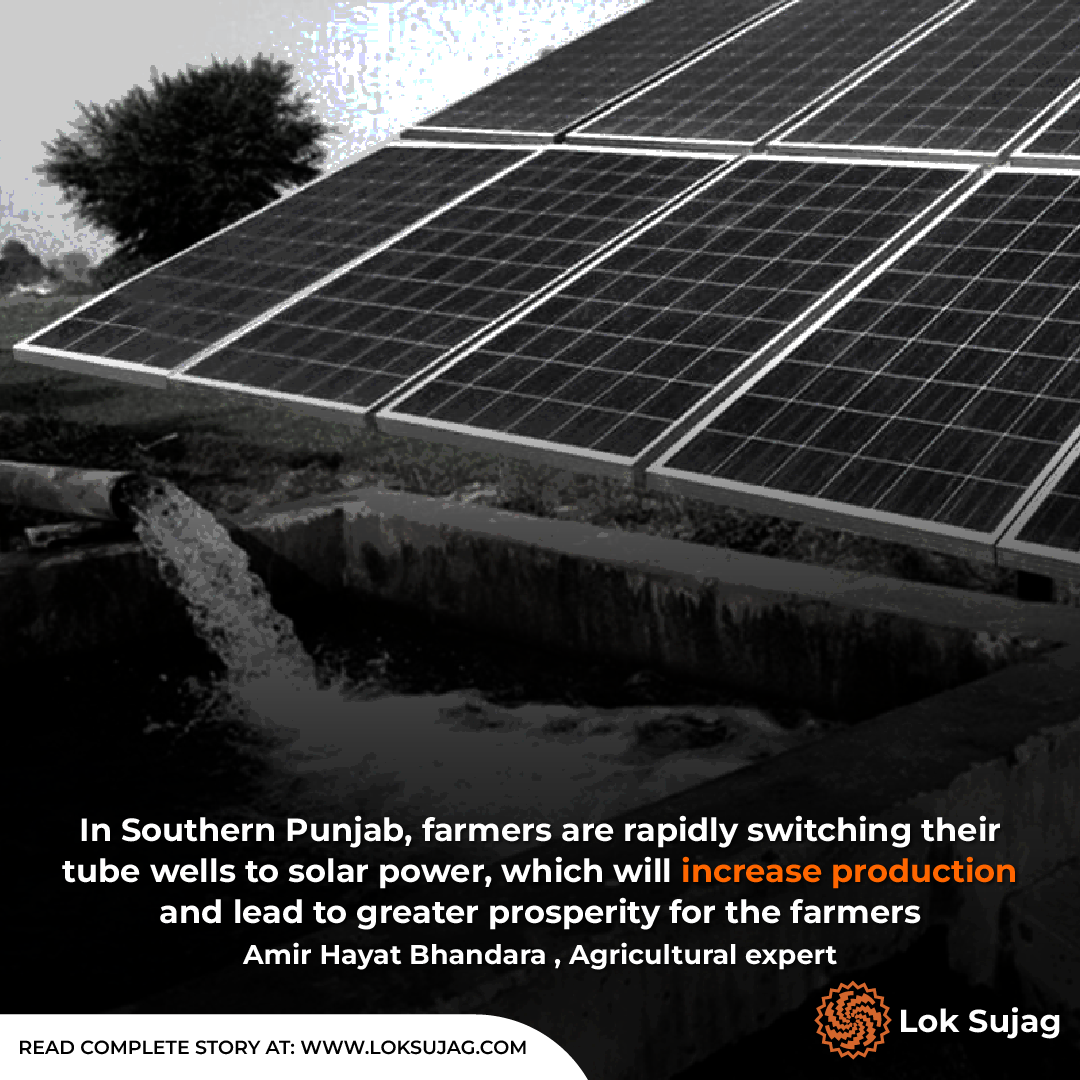
Progressive farmer and agronomist Aamer Hayat Bhandara hails from Pakpattan. Farmers in South Punjab are rapidly shifting tube wells to solar energy, he says and adds that another advantage of this would be that the use of diesel engines would be eliminated, which would reduce noise and pollution.
“If the production cost of cultivation is reduced, then the prices of commodities will also decline. Due to seasonal variations, crops will not face water depletion which will boost the yield and the farmer will be prosperous,” says Bhandara.
The Punjab government has recently introduced electrified agriculture under the ‘Transforming Punjab Agriculture Programme’. They have launched a Rs12bn project for solarisation of tube wells. Farmers will receive up to 70pc subsidy to shift 7,000 tube wells to solar energy in the first phase. However, some experts have raised questions over the excessive use of groundwater.
According to the study report of the International Center for Biosaline Agriculture (UAE 2020), Pakistan is the third largest country in the world using groundwater for irrigation where only 27pc of the agricultural area receives the canal water and 73pc is irrigated directly or indirectly by groundwater.
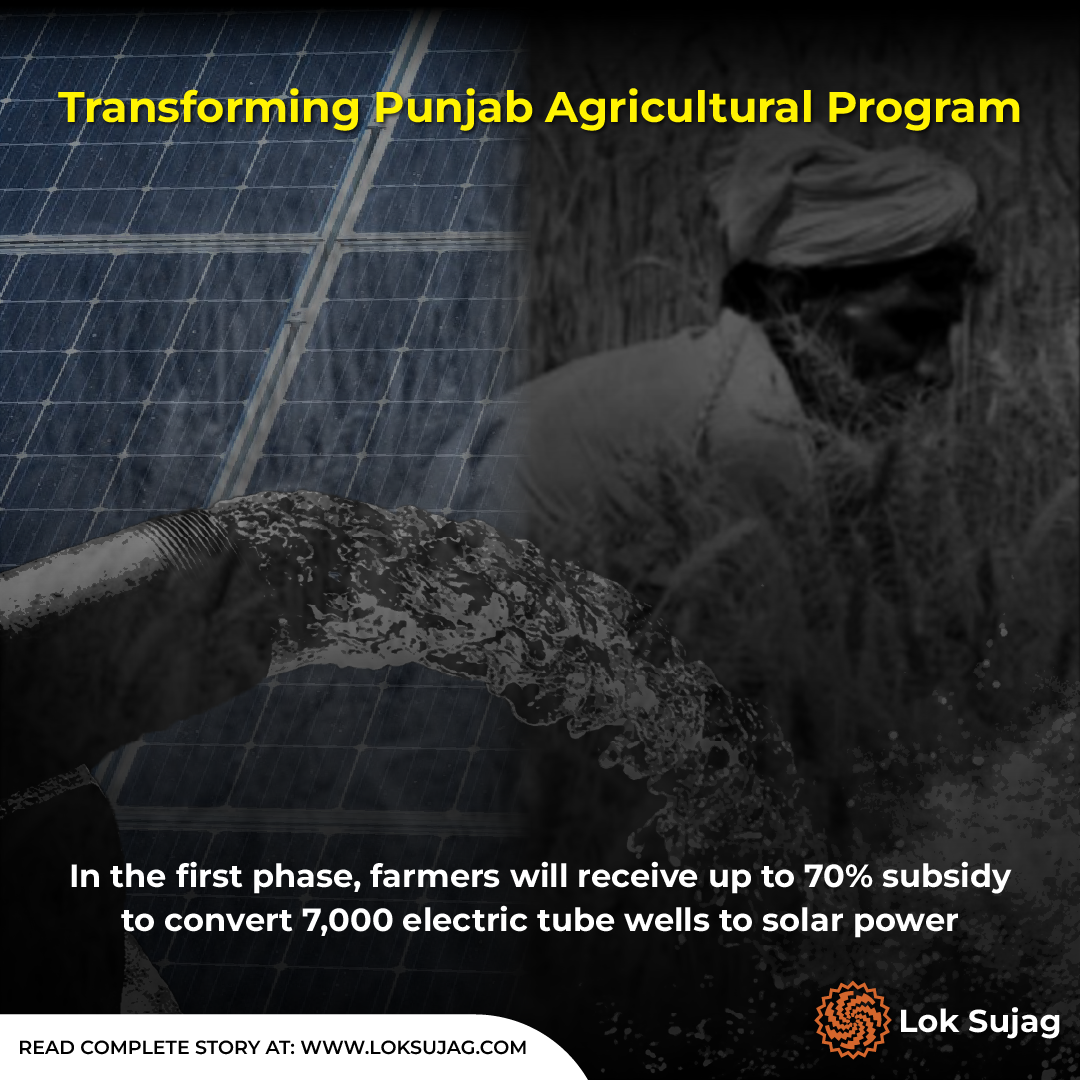
“Punjab uses more than 90pc of groundwater. As many as 1.2m private tube wells are operating in the country, of which 85pc are in Punjab, 6.4pc in Sindh, 3.8pc in Khyber Pakhtunkhwa and 4.8pc in Balochistan. The total discharge of underground water in Pakistan is about 60 billion cubic meters.”
According to the report, access to groundwater has helped farmers meet the food demands of a growing population. However, excessive use of water has led to depletion of groundwater levels and increased soil salinity.
“In more than 50pc of Punjab’s irrigated areas, the groundwater level has fallen below six meters, resulting in increased pumping costs and deterioration in groundwater quality.”
According to the report, about 85oc of tube wells in Punjab province are diesel-powered while 15pc are powered by electricity.
Amjad Jamal, a communication expert at the International Water Management Institute (IWMI), says that people are using solar tube wells to extract water even in the areas where the underground water level is already low.
“The IWMI is conducting a study to identify those spots where the groundwater level has fallen to dangerous levels.”
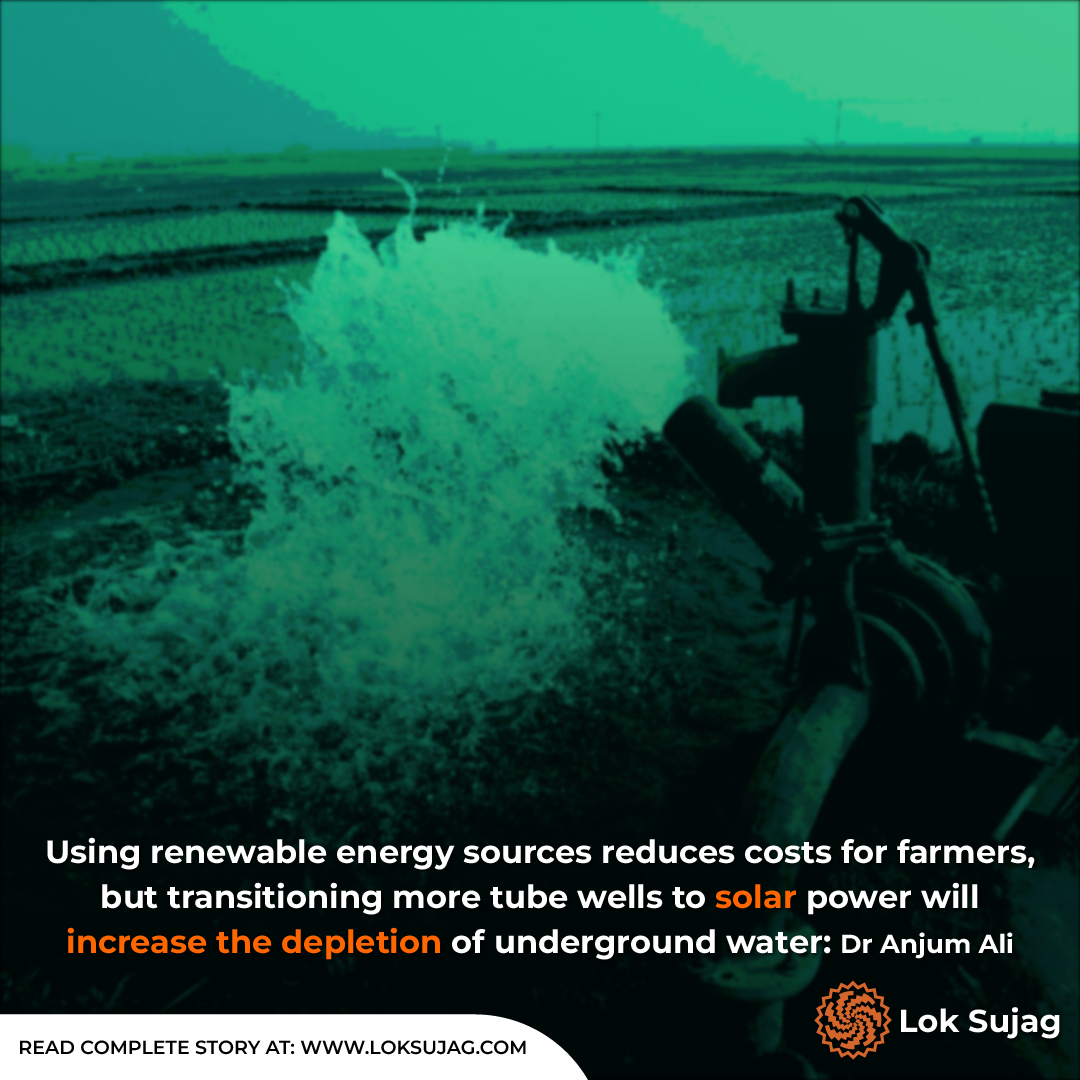
Punjab Agriculture Secretary Iftikhar Ali Sahoo has confirmed the IWMI data, saying that only electrified tube wells will be transferred to solar energy under the government programme.
“A maximum water depth of 60 feet has been fixed for the solar tube well, on which pumping systems of 15, 10 and 7.5 kilowatt equivalent power will be installed. The technical team will visit the spot and determine the water depth in the presence of the applicant.”
However, former director general of Agriculture Department (Extension) Punjab and agronomist Dr Anjum Ali Buttar does not support this initiative of the provincial government and expresses concerns about the level of underground water. He says that using renewable energy sources will undoubtedly reduce costs for farmers but groundwater wastage will increase.
“While running an electric tube well, a farmer tries to close it by watering the land in the least amount of time. However, if there is no fear of an electricity bill, he will use more water than the requirement.”
He believes that solar tube wells can be installed in the areas, including Cholistan, where rainfall is low or canal water is unavailable. In the remaining areas, the farmers should be introduced to modern agricultural practices, including drip irrigation, and low water consumption crops to save energy. He adds that there is a need to reduce crop cultivation like paddy and rice.
Also Read
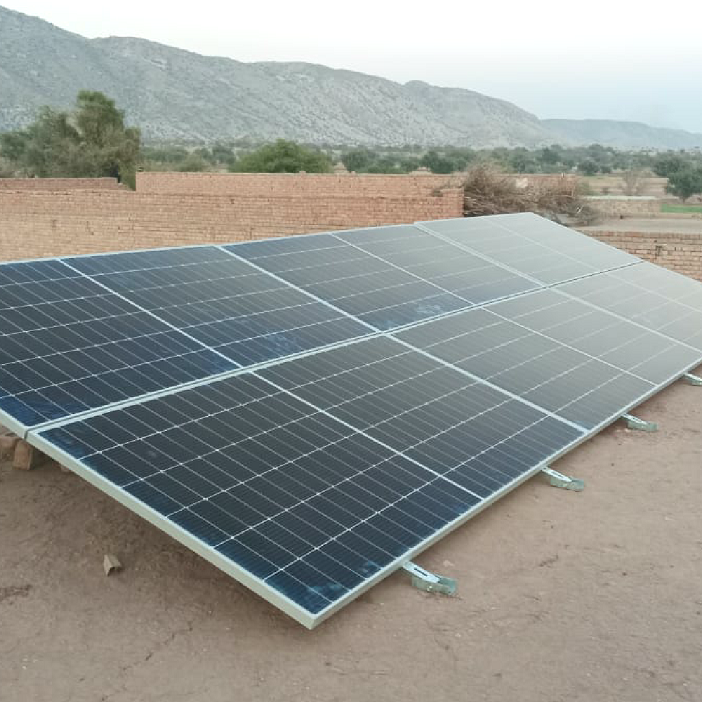
Esak Khumari: A village self-sufficient in electricity through solar energy
However, Deputy Director of Water Management Agriculture Punjab Tahir Mehmood does not believe that the use of underground water will increase with the solar tube well.
He cites an IWMI report (unpublished), stating that solar tube wells will not increase water consumption as they can be operated only from 8:30am to 4:30pm. He claims that these tube wells are not being proposed only in areas where the groundwater level is below 60 feet.
“Farmers will use water according to their needs. They know that excessive water can affect their yield.”
Dr Anjum Ali Buttar says the best irrigation period is during the evening and night. During the day, the crop water evaporates and is lost, while the water is conserved at night.
“The farmers who previously had to purchase water for their crops can now cultivate water-intensive crops like rice, sugarcane, maize and wheat. This is due to the availability of more affordable water from solar-powered tube wells.”
Published on 27 Jul 2024
